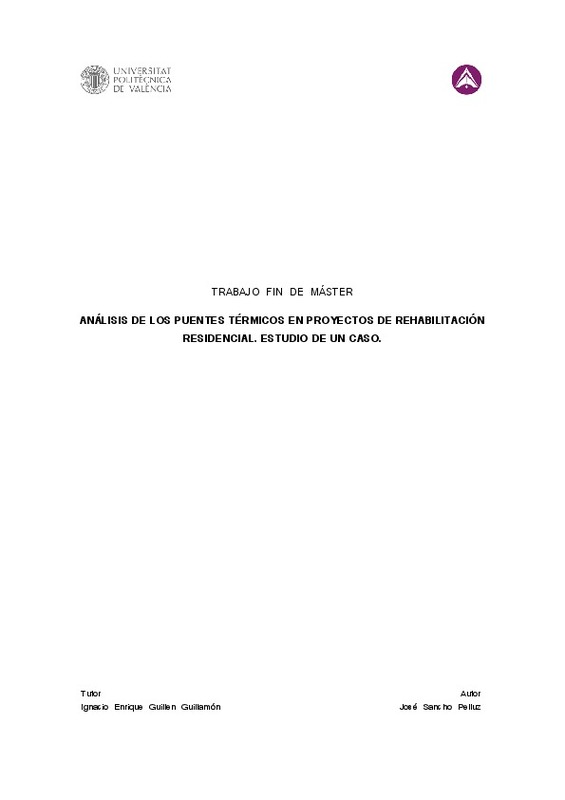|
Resumen:
|
[ES] Actualmente, los edificios de nueva construcción están diseñados bajo una normativa de eficiencia energética. Si se cumplen los requisitos especificados en estas normas y los técnicos de la construcción realizan un ...[+]
[ES] Actualmente, los edificios de nueva construcción están diseñados bajo una normativa de eficiencia energética. Si se cumplen los requisitos especificados en estas normas y los técnicos de la construcción realizan un diseño de calidad, podemos predecir que las emisiones de CO2 en el sector de la construcción disminuirán considerablemente en el futuro. El problema reside en aquellos edificios construidos con anterioridad a esta normativa. Por otro lado, el sector de la construcción en España se ha visto especialmente afectado debido a la crisis los últimos años, de forma que, actualmente, el porcentaje de nueva edificación ha disminuido drásticamente. Por lo tanto, se prevé un pequeño auge en el campo de la ampliación, reforma y rehabilitación de edificios. Por esta razón, hemos de esforzarnos en cuidar el tratamiento de los edificios antiguos en cuanto a su eficiencia energética se refiere, siendo los puentes térmicos uno de los factores determinantes en lo que a eficiencia energética en edificación se refiere. En este estudio se trata de analizar los puentes térmicos de una edificación residencial, ubicada en la población de Chiva, Valencia, estudiando éstos en su estado original y, posteriormente, en su estado final de proyecto. Se analizan las decisiones tomadas para mejorarlas y crear unas bases sobre cómo actuar en los puentes térmicos en proyectos de rehabilitación residencial.
[-]
[EN] Nowadays, new buildings are designed under severe regulations in term of energy efficiency. If the requirements specified in these rules are followed and building technicians perform a quality design job, we can predict ...[+]
[EN] Nowadays, new buildings are designed under severe regulations in term of energy efficiency. If the requirements specified in these rules are followed and building technicians perform a quality design job, we can predict that CO2 emissions in the construction sector will decrease considerably in the future. The problem lies in those buildings constructed prior to this standard is required. On the other hand, the construction sector in Spain has been particularly affected because of the crisis in recent years, so that today, the percentage of new construction has decreased dramatically. Therefore, it is expected a small rise in the field of renovation and restoration of buildings. For this reason, we have to strive to care for the treatment of old buildings in terms of energy efficiency, thermal bridges being one of the determining factors when it comes to energy efficiency in buildings, so they meet the new standards in terms of energy conservation. The aim of this study is to analyze the thermal bridges of a residential building, located in the town of Chiva, in the province of Valencia, studying them in their original state and subsequently in its state in the final project. Decisions taken to improve them and create a basis on how to act about thermal bridges in residential building renovation projects are analyzed.
[-]
|







